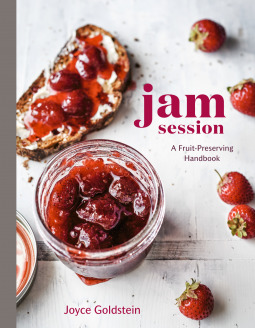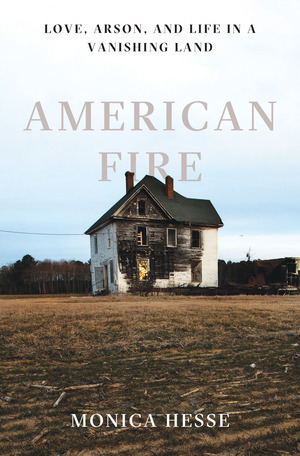American Fire: love, arson, and live in a vanishing land by Monica Hesse
Between November 2012 and April 2013 eighty-six fires were started in Accomack County, Virginia. This was a rural area with few local residents and most of the fires were started in abandoned houses or buildings. With local, state, and federal law enforcement involved as the fires continued it seemed like the arsonist would never be caught. Multiple profilers were brought in and yet still no one could catch the arsonist. Until the night of April 1, 2013 when two state troopers on their last night of surveillance caught the arsonist pair red-handed. Charlie Smith and Tonya Bundick were locals who had grown up in the area. Charlie had a criminal past, but definitely wasn't the mastermind. Their relationship and lives were very stressful - living paycheck to paycheck, but just barely. The fires somehow eased the stress for them, but there was never a real explanation of why they did what they did. Monica Hesse does a great job of laying out both Charlie and Tonya's personal histories, the history of the area, and the arson investigation. Not only is this the story of a crazy arson case, but the story of one couple trying to survive in a poor, rural area and how they unfortunately turned to crime to ease some of their stress and tension. A very quick, well-written read about a very interesting case.
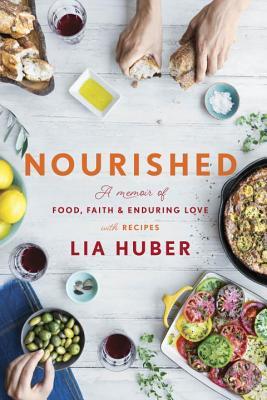
Nourished: a memoir of food, faith, and enduring love by Lia Huber
Nourished follows Lia Huber's journey of how food and cooking shaped her life. Starting in Greece while studying abroad in college she discovers that food is more than just fuel for your body, food can nourish your soul. In her early twenties she was diagnosed with an autoimmune disease and also had to have a hysterectomy. These physical challenges inspired Huber to change how she ate to help heal her body. As she and her husband travel abroad and move around the US, food always brings Huber back to her roots and her passion.
I was really tracking with the first half of this book. Huber became a Christian after college, but had a non-traditional life - married, but childfree. Never wanting children helped her cope with having to have a hysterectomy since now she biologically couldn't have children anyway. Then all of a sudden she "realizes" she really did want to be a mother and suddenly so did her husband. So, they adopt in Guatemala - one of the countries they stayed in during a driving trip to Costa Rica. And so now that she's back in the Christian homemaker stereotype her life is complete. As a Christian woman who's childfree by choice, it just bothered me how quickly this switch was flipped for her and how perfectly everything worked out. I feel like this just reinforces the stereotype that every woman REALLY does want to be a mother deep down. After that part I really lost interest in the book and just skimmed the last few chapters.

Tamed & Untamed: close encounters of the animal kind by Sy Montgomery and Elizabeth Marshall Thomas
I've read two of Sy Montgomery's books (The Good Good Pigand The Soul of an Octopus), so I couldn't wait to read this one. While this one is different in that it's a collection of essays by Montgomery and Elizabeth Marshall Thomas it does not disappoint. The book is divided into six categories: animals and people, birds, dogs and cats, wild animals, tiny animals, and animal abilities. The essays cover everything from animal intelligence, skills in the wild, how our pets view us, and more. A perfect book for any animal lover out there!
A few quotes I really liked:
"Why is it more fun to adopt a particular, named animal than to simply make a donation for conservation of a species? Because, as researchers confirm, no matter the species studied - be it puffins or snow leopards or even sharks - animals are individuals, just like we are. And their stories can be as compelling as our own." (p. 55)
"An adult hummer visits an average of 1,500 flowers in a day. If the nectar were converted to a human equivalent, that would be fifteen gallons a day. But few people realize that insects are equally essential. Each hummingbird needs to catch and eat six to seven hundred bugs a day. (So spraying insecticide in your yard is like hiring a hummingbird exterminator.)" (p. 64)
"When humans get involved with other species, especially if they try to manage another species, things often get messed up. Ever since a dog's appearance made a difference, breeders have been manipulating what dogs look like no matter what this does to health and longevity." (p. 76)
"Arizona professor Con Slobodchikoff has documented that prairie dogs - gregarious ground squirrels - use specific sounds to communicate to others that a human has been spotted. (They also discuss the dangers of cats, badgers, hawks, and ferrets, as well as announce the comforting presence of harmless species like cows and pronghorns, who signal safety.) Not only that, but the little mammals can communicate what color shirt the human is wearing, whether he is tall or short, and even whether the human is carrying a gun!" (p. 165-6)
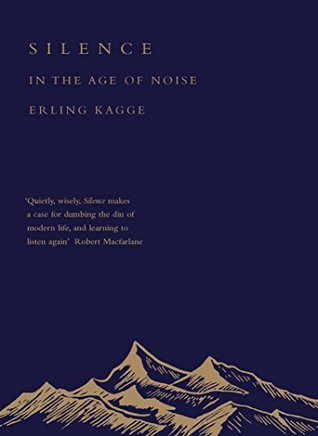
Silence in the Age of Noise by Erling Kagge
In 1993, Norwegian explorer Erling Kagge spent fifty days walking solo across Antarctica. He was the first person to reach the South Pole alone and while he did have a radio with him he had removed the batteries before he started his journey so that he could truly be alone and silent for the entire trek. In this book he explores what he learned on that solo journey of silence, but also through other experiences and from other philosophers and thinkers about the value of silence and what we can learn about ourselves and our world through silence. In today's constant barrage of noise silence can seem like a luxury that few can afford, but as Kagge points out we must all find that silence within ourselves to truly live and understand our world. This short book is a profound meditation on silence and why we so often fill our lives with noise to push back the truths that silence brings.
Some quotes I really liked:
"I believe it's possible for everyone to discover this silence within themselves. It is there all the time, even when we are surrounded by constant noise. Deep down in the ocean, below the waves and ripples, you can find your internal silence. Standing in the shower, letting the water wash over your head, sitting in front of a crackling fire, swimming across a forest lake or taking a walk over a field: all these can be experiences of perfect stillness too. I love that." (p. 26)
"Knitting, brewing beer, felling trees; these are activities that all have something in common. You set yourself a goal and carry it out - not all at once, but over time. You use your hands or your body to create something. By moving yourself, you move your mind. I enjoy experiences where the satisfaction travels from the body to the head, rather than the other way around. The results that you achieve - firewood to warm you, a sweater you have poured yourself into - are not things that can simply be printed out. The fruit of your labour is a tangible product. A result that you and others can enjoy over a period of time." (p. 30)
"The philosopher and boredom theorist Blaise Pascal promoted this type of exploration as early as the 1600s: 'All of humanity's problems stem from man's inability to sit quietly in a room alone.' So a discomfort with being alone, holding one's tongue and simply being did not start with the advent of TV in the 1950s, with the coming of the internet in the '90s or with smartphones: it has always been a problem, and Pascal was probably the first to write about this feeling...This disquiet that we feel has been with us since the beginning; it is our natural state. The present hurts, wrote Pascal. And our response is to look ceaselessly for fresh purposes that draw our attention outwards, away from ourselves." (p. 37)
"In a joint study from the universities of Virginia and Harvard, scientists left individuals alone in a room for six to fifteen minutes without music, reading material, the chance to write or their smartphones. They were left solely to their own thoughts. The participants ranged from eighteen to seventy-seven years old and were drawn from a variety of social backgrounds, yet the results were the same regardless. Most felt discomfort...The scientists then took the study one step further, in order to see whether the participants would rather do something unpleasant, such as receive an electrical shock, than sit alone in silence once again. Each participant had been subjected in advance to a similar electric shock so they would know exactly how painful the option was. And it was painful. Nevertheless, nearly half of the subjects eventually pushed on the button to administer an electrical shock in order to reduce their silent time...One of them pushed the electric shock button 190 times." (p. 42-3)
"Some users get a good response when they post something on social media, while most sit waiting for anyone to care. And the more unpredictable this interaction is, the more the user is addicted. You don't want to miss out on anything." (p. 49)

In the Middle of the Mess: strength for this beautiful, broken life by Sheila Walsh
Sheila Walsh's father committed suicide when she was 5 years old. She didn't remember her father when he was well and after his death her family never spoke about him. Because she was a child and nothing was explained she truly thought she was the reason for his suicide even into adulthood. Then as an adult she too suffered from clinical depression and suicidal thoughts. As a Christian, she believed that if she told people about her time in a psychiatric ward or her continuing thoughts of suicide it would be a bad witness because God hadn't "fixed" her. Finally Walsh started to realize that God was with her in her darkest moments and she didn't need to feel ashamed of her struggles with depression or suicidal thoughts. Thanks to therapy, a loving family, and a close group of "safe sister" friends Walsh is able to manage her depression better and realize that God is often the closest to us when we are In the Middle of the Mess as the title of her book says.
While I don't have clinical depression or struggle with suicidal thoughts, I could still very much relate to her struggle. So often Christians hide their struggles because they don't want people to think badly of them or show how wounded they are, but Christ came to help the sick not the healthy and whatever your particular struggle might be He can help you heal those wounds. I wasn't familiar with Sheila Walsh before, but she's a well known Christian musician, author, and speaker. I mainly picked up this book because of the title and some things that I'm working through right now in my spiritual and emotional life, but it came to me at the right time and definitely gave me some new ideas and practices to put into place.
Some quotes I really liked:
"This is the truth I would discover that night: Christ came to save us in the present moment. The gift of salvation is God's active, present gift to us, no matter where we are...If all our brokenness was healed the moment we came to Christ, we'd have no need to call on His name over and over again - but that's not my story, and I suspect it's not yours either...There is present-tense salvation, one that's offered to us right now in the middle of our mess. Salvation is far greater and more present than we imagine." (p. 8-9)
"When we don't say the true things, the things that might free us from secrets and lies, the poison seeps out of our lives and into the lives of others. The anger and sadness surface when you least expect it." (p. 24)
"Not all losses weight the same. Some disappointments may seem small measured against others, so we don't bring them into the light...They're not life-changing losses, but they are very real disappointments. Instead of speaking those out loud, though, we often stuff them inside because we don't want to seem small or petty before God. But hear this truth: Nothing that affects you is petty to God. He loves you and cares about everything that affects you. He wants to deliver you, to bring you present salvation. I don't know what losses you've had in your life. I don't know what you're walking through right now, but I want to say this: Don't hurry through it, and don't hide the pain. Don't let anyone tell you to get over it and don't hide it in secret, thinking the pain won't find you there. It will. I promise. Wouldn't you rather confess it to God, to feel Him taking your load and delivering you?" (p. 52)
"Just because a place has become familiar doesn't mean it's where you belong." (p. 139)
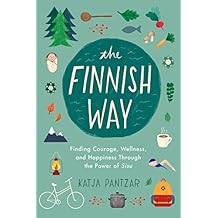
The Finnish Way by Katja Pantzar
Katja Pantzar grew up in Canada, but had two Finnish parents so some of the Nordic ideas and philosophies were things she grew up seeing her parents do. After being diagnosed with depression in her late 20's, Pantzar decided to move to Finland and try to reconnect with her family roots. This was when she was introduced to the idea of Sisu - a Finnish idea or resilience, fortitude, and not giving up. This philosophy plays out in all areas of Finnish life - food, exercise, work, family, etc. In the book she explores Finnish trends/cultural norms that exemplify Sisu like cold water swimming, sauna, being out in nature, bike riding, movement as medicine and more. While a lot of these ideas/ways of life seem wonderful, it would be much harder to do them outside of living in a coastal town. There is also the issue of Nordic countries designing cities around public transportation or making it easier to walk or bike to work. While Pantzar shows how you can still take these ideas and implement them to suit your situation, it's obvious that it would be a LOT easier if you lived in a Nordic country. But, there are lots of great ideas and ways to think about how you could incorporate more nature and more Sisu into your daily life.
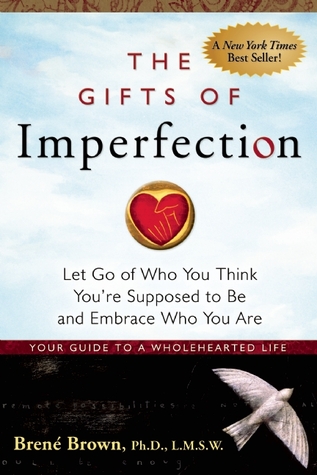
The Gifts of Imperfection by Brene Brown
When Brene Brown first started studying shame she saw some patterns in people who were more resilient and called these patterns "wholehearted." This book fleshes out those wholehearted patterns and ideals - a lot of which deal with authenticity and breaking away from who we "should" be and moving toward who we truly are. While I did like the book and there was a LOT of great information, it almost felt like you were dropped into the middle of a conversation. There is just a LOT going on right from the first page. I read Braving the Wilderness earlier in the year and really liked it so I wanted to go back and read more of Brown's work. Maybe she's improved with each book! While I did like this one and get a lot out of it, I was slightly put off by the cover - it was very Oprah-esque and probably not one I would have picked up if I wasn't already familiar with the author. But, you can't always judge a book by it's cover and there IS a lot of great info here. I'll definitely be reading more by her in the future.
Some quotes I liked:
"One of the biggest surprises in this research was learning that fitting in and belonging are not the same thing, and, in fact, fitting in gets in the way of belonging. Fitting in is about assessing a situation and becoming who you need to be to be accepted. Belonging, on the other hand, doesn't require us to change who we are; it requires us to be who we are." (p. 25)
"It's also pushed me to think about the important differences between professing love and practicing love. During a recent radio interview about the rash of celebrity infidelities, the host asked me, 'Can you love someone and cheat on them or treat them poorly?' I thought about it for a long time, then gave the best answer I could based on my work: 'I don't know if you can love someone and betray them or be cruel to them, but I do know that when you betray someone or behave in an unkind way toward them, you are not practicing love. And, for me, I don't just want someone who says they love me; I want someone who practices that love for me every day.'" (p. 28)
"In Jungian circles, shame is often referred to as the swampland of the soul...What I'm proposing is that we learn to wade through it. We need to see that standing on the shore and catastrophisizing about what could happen if we talked honestly about our fears is actually more painful than grabbing the hand of a trusted companion and crossing the swamp." (p. 36)
"Our stories are not meant for everyone. Hearing them is a privilege, and we should always ask ourselves this before we share: 'Who has earned the right to hear my story?' If we have one or two people in our lives who can sit with us and hold space for our shame stories, and love us for our strengths and struggles, we are incredibly lucky...We don't need love and belonging and story-catching from everyone in our lives, but we need it from at least one person." (p. 47)
"Children most often learn hope from their parents. Snyder says that to learn hopefulness, children need relationships that are characterized by boundaries, consistency, and support...To add to Snyder's work on hope, I found in my research that men and women who self-report as hopeful put considerable value on persistence and hard work. The new cultural belief that everything should be fun, fast, and easy is inconsistent with hopeful thinking. It also sets us up for hopelessness. When we experience something that is difficult and requires significant time and effort, we are quick to think, This is supposed to be easy; it's not worth the effort, or, This should be easier: it's only hard and slow because I'm not good at it. Hopeful self-talk sounds more like, This is tough, but I can do it." (p. 66)
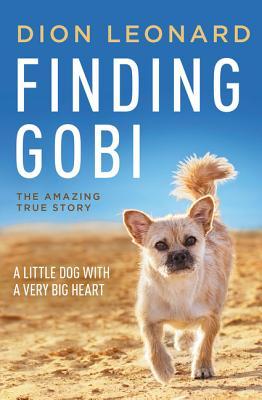
Finding Gobi by Dion Leonard
Dion Leonard is an ultra-marathoner - running races that lasted days and were in extreme environments. While running a 155-mile race through China's Gobi desert Leonard encounters a small dog. The dog seems enamored with Leonard, but he figures there's no way the dog will keep up with him through the day's leg of the race, but she does and continues on the next day as well. Soon Leonard finds himself looking out for the little dog he names Gobi and even sharing his food rations with her. By the end of the race he decides to find a way to bring Gobi home to Scotland. He leaves her with one of the race organizers in China while he works out a plan, but Gobi escapes. Leonard ends up taking a leave from work to go back to China and find Gobi. Miraculously he does and that is still only the beginning of their adventure to get Gobi back home to Scotland. A wonderful happy story about the bond between dog and man. This is a quick, adventure-filled read with a very happy ending.

We Are All Shipwrecks by Kelly Grey Carlisle
Kelly realized once she started school that her family wasn't like other families. Other families had a Mom and Dad and kids, while she lived with her Grandfather and his second wife. Other kids knew their parents, while Kelly's Mom was murdered when she was just 3 weeks old and her Father was in and out of jail. Other families had normal homes and jobs, while Kelly's Grandfather ran a porn shop and for most of her childhood they lived in a small boat in an Los Angeles harbor. Still while she was growing up Kelly idolized her Grandfather. He said he had served in WWII and ended up in a concentration camp, he knew lots of famous actors and musicians, and the reason he loved boats so much was because of his time in the Navy - but as an adult Kelly finds out most of her Grandfather's stories weren't true. So, who was Kelly's Grandfather? What really happened to her Mother? These are the questions Kelly struggles with as an adult once she realizes that she did grow up in a family of people who loved her and wanted the best for her even if they sometimes had a hard time showing it.
While Kelly's story is fascinating, I wish the book had been more 50/50 with her childhood and adulthood. It kind of felt like she jumped from high school over college and straight into being married and a mother herself dealing with these questions about her family. I would have liked more about how she was able to create a stable home life when she never had that for herself. I also wish she could have made contact with her Father as she found out he really did want a relationship with her and did love her Mother. Overall, a great memoir of a woman growing up in a crazy, dysfunctional family that manages to create the stable family she wished she had for her own children.
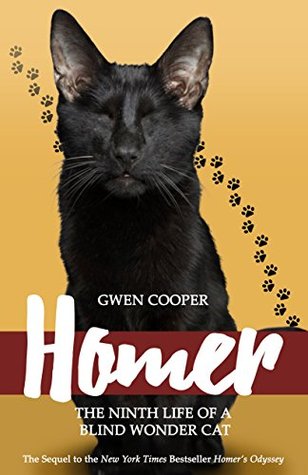
Homer: the ninth life of a blind wonder cat by Gwen Cooper
I LOVED Homer's Odyssey when it came out, so when I saw that there was a sequel I couldn't wait to see the next chapters of Homer's life. As Gwen Cooper explains, Homer's Odyssey covered 12 years and she felt like she didn't have enough content to make a second book equally long, so this is more of a "mini-sequel" that covers the time period after Homer's Odyssey was published and through his death at age 16. The first two chapters cover trying to get the book published and the media attention after it came out. The last two chapters are serious tear-jerkers that cover when Homer got sick and through his death. Homer was an amazing cat right up until the very end. He was diagnosed with kidney failure and not given any prognosis - his liver levels were so high he shouldn't have been alive at all - but he lived for another 4 months. It was very hard to read the second half because it was so sad and I just lost my 14 year old cat Roxy a little less than 3 months ago. But reading more Homer stories was great and as Cooper says in the introduction she got to relive all these Homer memories again while writing this mini-sequel. While definitely not as long, if you loved Homer's Odyssey make sure to read this follow up.

Sensing the Rhythm: finding my voice in a world without sound by Mandy Harvey
I first heard of Mandy Harvey when I saw the clip of her episode on America's Got Talent singing and playing the ukelele even though she's completely deaf. In this book she explains how she lost her hearing and how she managed to get back into music even with no hearing. Harvey was a music major in her first year of college when she suddenly started to lose her hearing and within a few months she was completely deaf. She went into a deep depression because music was her love and passion. Her father helped her try out singing again and she was able to continue singing through muscle memory, feeling music and vocal vibrations, and with help from a pitch app to make sure she gets and stays on pitch while singing. But, this is not the only adversity Harvey has overcome in her life - she had other physical and emotional struggles, including a failed marriage that helped shape her life and become the resilient person she is now. This is a very inspiring book about an amazing woman who's overcome a lot and revamped her dreams when the original dreams died.

Nomadland: surviving American in the twenty-first century by Jessica Bruder
Nomadland explores a unique segment of the US population - retirement age people who are essentially homeless, living in old RVs, vans or cars and traveling all over the US doing seasonal work and meeting up as a community of "vandwellers." While many people saw media coverage of the tent cities that popped up around the country during the 2008-9 recession full of out of work people who had been foreclosed on or evicted and were now homeless. While some of the vandwellers enjoy their lifestyle, most if not all were forced into this lifestyle and are now trying to make the best of it. Jessica Bruder buys a van to live out of for months at a time so she can truly get to know the vandweller culture and experience this lifestyle. Bruder interviews many people, but mainly follows Linda May, a woman in her late sixties who worked a variety of jobs in her lifetime, but yet couldn't seem to make ends meet paying rent, utilities, etc. but with no rent and much lower expenses she can work toward her dream of buying land and building an Earthship house one day. The most eye-opening part of this book for me was how many seasonal jobs are geared toward older adults as extra retirement income, but the reality is these people depend on these jobs and will probably never really be able to retire. Amazon is a huge recruiter of "camperforce," older people who have RVs/campers/vans to live out of and will travel to Amazon's huge warehouses as seasonal workers during the holiday rush between Thanksgiving and Christmas. This is extremely physical and demanding work that is needed round the clock. I also didn't know that many National Parks advertise for "campground hosts" who help rangers keep campsites clean, clean public showers and restrooms, and check in campers. While there's nothing wrong with either of these jobs, it just felt sad that many of these people can't find any other full-time work because of their age. It also felt somewhat predatory and while that shouldn't surprise me about a huge corporation like Amazon I guess it still does. This is a unique story about a hidden part of our population, but there is also just an undercurrent of sadness too. These people do have a genuine community and help each other, but there are many that fall through the cracks when they have a health crisis. Definitely a book I'll be thinking about for a long time.
Some quotes I really liked:
"Amazon had recruited these workers as part of a program it calls CamperForce: a labor unit made up of nomads who work as seasonal employees at several of its warehouses, which the company calls 'fulfillment centers,' or FCs. Along with thousands of traditional temps, they're hired to meet the heavy shipping demands of 'peak season,' the consumer bonanza that spans the three to four months before Christmas. Amazon doesn't disclose precise staffing numbers to the press, but when I casually asked a CamperForce manager at an Amazon recruiting booth in Arizona about the size of the program, her estimate was some two thousand workers [that was 2014]...The workers' shifts last ten hours or longer, during which some walk more than fifteen miles on concrete floors, stooping, squatting, reaching, and climbing stairs as they scan, sort, and box merchandise. When the holiday rush ends, Amazon no longer needs CamperForce and terminates the program's workers. They drive away in what managers cheerfully call a 'taillight parade.'" (p. 45)
[Talking about how physically demanding the Amazon temp work is on anyone, but especially older bodies] "Many of the RVs I entered [in CamperForce] were stocked like mobile apothecaries, with Icy Hot Pain Relieving Gel, tubs for soaking tired feet, Epsom salts, and bottles of Aleve and Advil. If the workers ran out of pills, that wasn't a problem - Amazon had wall-mounted dispensers offering free over-the-counter painkillers in the warehouse." (p. 55-6)
"Along with many of the wayfarers he came to inspire, Bob [Wells who created CheapRVLiving.com] saw things differently. He envisioned a future where economic and environmental upheavals had become the new American normal. For this reason, he didn't package nomadic living as a quick fix, something to tide folks over until society had stabilized, at which point they could reintegrate with the mainstream. Rather he aspired to create a wandering tribe whose members could operate outside of - or even transcend - the fraying social order: a parallel world on wheels." (p. 78-9)
